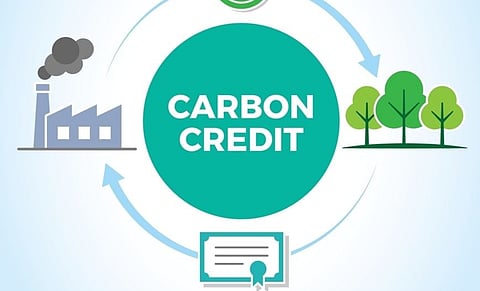
- Home
- Live Blog
- Breaking News
- Top Headlines
- Cities
- NE News
- Sentinel Media
- Sports
- Education
- Jobs

The Climate Change Conference (COP29) underway in Baku in Azerbaijan endorsing a global carbon market framework is a step closer to establishing a centralised carbon market under the UN. The development has great significance for the Northeast region, a huge carbon sink and biodiversity hotspot. As ownership of vast stretches of forests in the region lies with the indigenous communities, enabling the communities on carbon credit marketing will be crucial to the region optimally tapping its carbon credit potential. Each unit of carbon credit is estimated to be one tonne of carbon or its equivalent greenhouse gas reduced or removed from the atmosphere. Under the mechanism of carbon credit, the government allots carbon credits to registered companies to set limits of carbon emissions against their projects. If the companies require to emit carbon beyond the set limits to commission or run their projects, then they can buy additional carbon credits. Similarly, if a company has surplus carbon credits, then it can sell those to companies exhausting their credits and seeking to buy additional carbon credits. This mechanism facilitates the flow of finance against existing or new carbon sinks in the form of forest or tree cover that removes carbon dioxide from the atmosphere and sequesters it. Arunachal Pradesh has the highest carbon stock in the country, while the hydroelectric projects, under construction and proposed, in the state can also generate carbon credits as these are renewable energy projects. However, the adverse impact of hydropower projects in downstream areas of Assam brings into the discourse around the carbon market framework the issue of factoring in the potential cost involved in mitigating this impact of the projects. State governments in the region have already evinced keen interest in tapping the carbon credit potential of the region to monetise the forest cover in respective states, but people in the region are clueless about how they are going to benefit from carbon credit markets. People in the region will be interested in conserving forest cover only when they are made important stakeholders in the transaction of carbon credits generated in the region, and climate finance that flows from it brings socio-economic benefits in the form of the creation of new employment avenues, better education and healthcare, improved connectivity, and sustainable livelihood opportunities. The activities related to carbon credits in the region have so far remained to the government and carbon credit companies with no direct participation of the people, which needs to be changed in the wake of global development relating to the carbon market and its mechanisms. Involving the community members in a carbon trading project such as a hydropower project or a solar power project creates a space for them to understand what different benefits from the project are and what their requirements and expectations are from it. Ignoring this aspect will lead to a trust deficit among the people about carbon trading projects, even when the government or project authorities assure them of multiple benefits. In respect of community-owned forest cover in the region, signing of profit-sharing agreements with the communities concerned will facilitate smooth establishment of carbon credit markets. Hydropower projects can offset more than 97% of carbon emissions in comparison to coal-based power projects. This fact, however, has not settled the debate over the environmental impact of hydropower projects on the fragile ecology of the Northeast region. The run-of-the-river hydropower projects also triggered issues of environmental degradation due to tunnelling of the mountains and the hills and affecting the natural water flow regime in the perennial rivers, which sustain farming and other livelihoods of communities dependent on these rivers along their catchment. The population dependent on the natural flow of these rivers increases gradually as it advances through downstream areas. While pushing for tapping the carbon credit potential of the region, these issues cannot be ignored. Rather, addressing these issues with priority is crucial to building trust among the local stakeholders about carbon credit transactions. Sharing of profits from a carbon trading project needs to be considered from the perspective of its catchment, which implies that in the case of rivers flowing across multiple states or countries, the decision must not be unilaterally decided by upper riparian stakeholders or one state government and should ideally involve the neighbouring state and other lower riparian stakeholders. The states in the region building awareness among the communities is essential to facilitate them to play their part in this key market, which is poised to grow exponentially over the next decade with the COP approval clearing the decks for bilateral or multilateral marketing arrangements. The region focusing on creating a combined pool of highly specialized skilled professionals locally will help make it self-reliant in the establishment of carbon credit verification agencies, environmental consultation firms, and other key stakeholders locally instead of depending on agencies and firms outside. The COP approval is a reminder that Northeast must make hay while the sun shines.